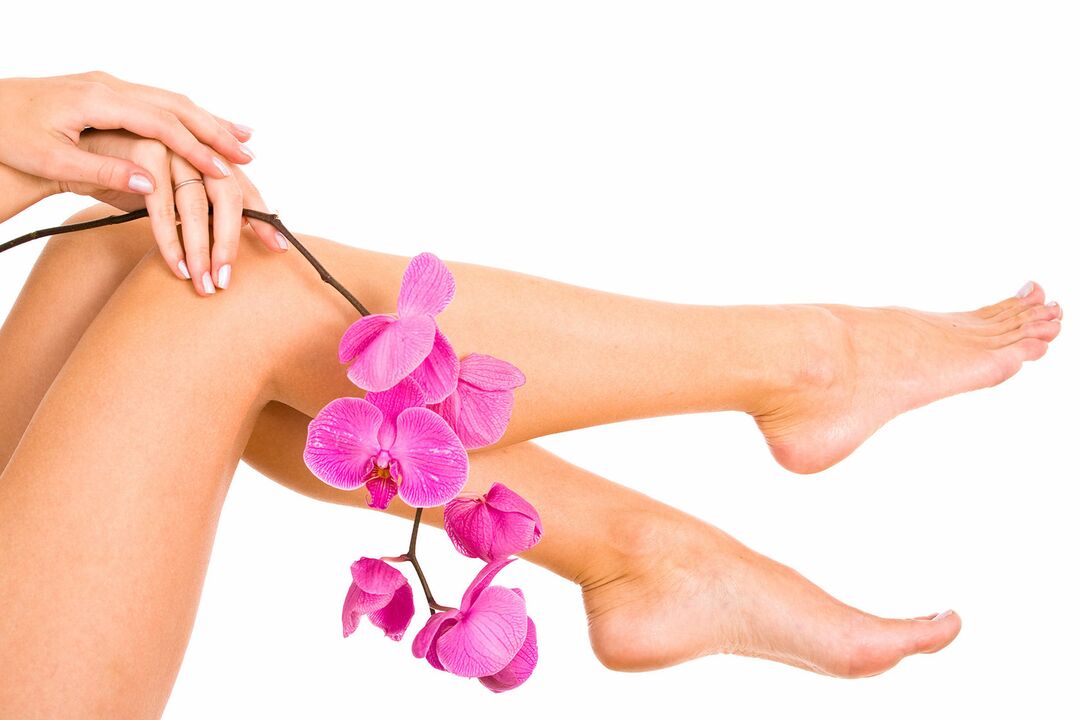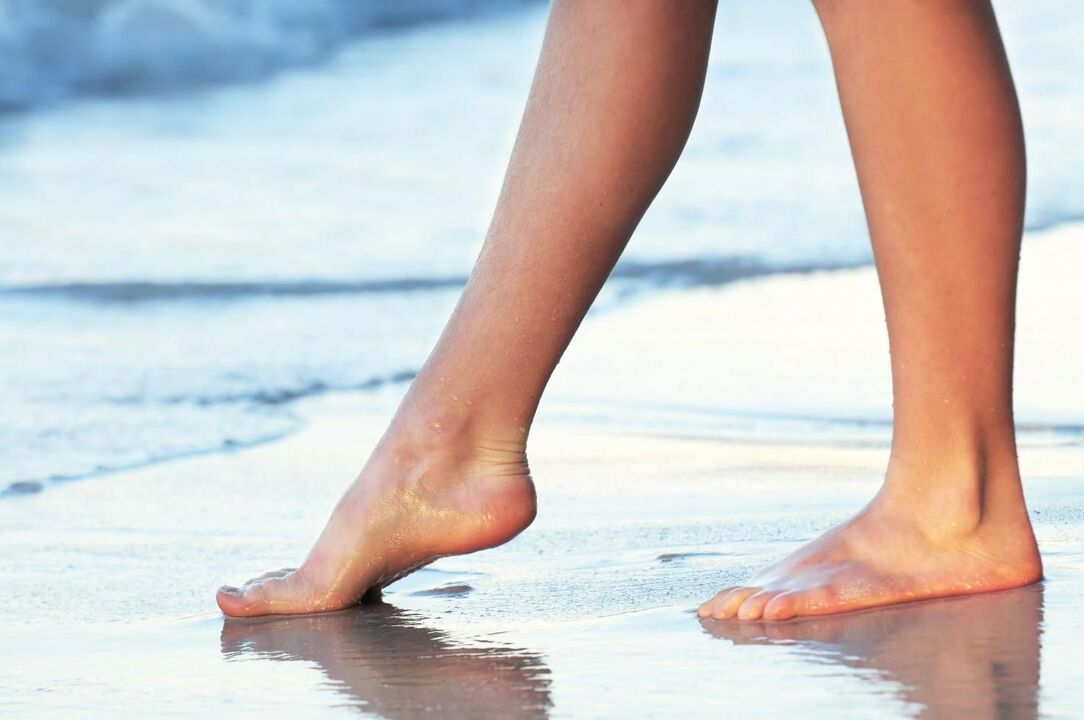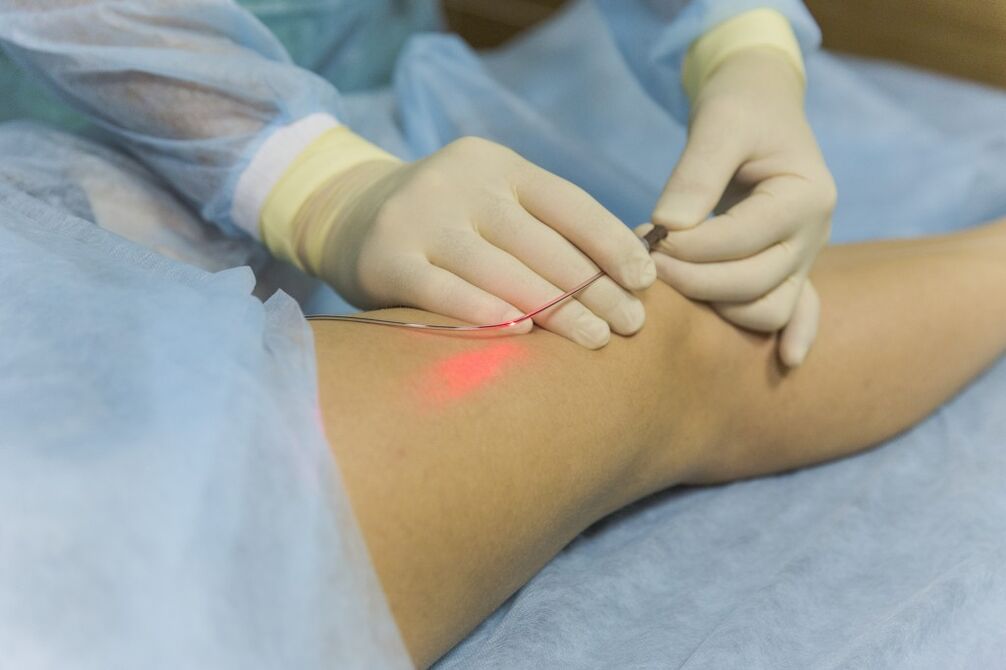
Varicose veins are a fairly common disease among the adult population. According to the World Health Association, approximately 40% of people are affected by this disease to varying degrees of severity.
The disease is more typical among women: every fifth representative of the fair sex is susceptible to varicose veins. Men suffer from this disease to a lesser extent and only 10% face this problem.
In the early stages, the disease is of little concern and does not endanger the patient's life, but later dangerous diseases can develop, for example, thrombophlebitis. The resulting blood clots already pose a serious threat to life.
Depending on the etiology, two forms of varicose veins are distinguished, they are presented in the table:
| Primary | Secondary | |
|---|---|---|
| Cause | Weakening, disruption of the structure of the vein wall | Poor venous blood flow due to poor functioning of the vascular valves |
| Aggravating factors | Excess weight, pregnancy, standing work, compression of the veins by clothing items, congenital weakness of the vein walls | Development of various types of tumors, disturbances resulting from trauma |
Causes of disease
The essence of the disease lies in an abnormal increase in pressure in the superficial vessels due to disruption of the valves, which normally facilitate the flow of venous blood in one direction (towards the heart). When disrupted, the valves weaken and blood begins to stagnate in the veins, leading to their stretching, lymph node formation, etc. In this case, a slowdown in blood flow is observed, which leads to a disruption of the trophism of cells and tissues and the formation of ulcerative processes.
Main causes of the disease:
- genetic predisposition;
- stay in an upright position for a long time;
- limited movement throughout the day;
- disorders of the endocrine system, both due to illness and taking hormonal drugs;
- pregnancy;
- physical activity of all kinds (at work, in the gym, at the dacha, etc. );
- lower limb injuries;
- bad habits, including smoking.
Note.The risk group includes people who spend the whole day standing, sitting and moving little, for example salespeople, teachers, drivers, people sitting at a computer, etc.
The fact is that people sitting for a long time compress blood vessels, which slows down blood circulation. Therefore, varicose veins develop in this case, regardless of age, and in those who stand for a long time, according to physical laws, the blood creates constant pressure on the vessels and, as a result, they begin to deform, which leads to the development of the disease.
Also at risk:
- women wearing high-heeled shoes;
- people practicing sports with loads on the legs (strength sports, tennis);
- all people who work standing;
- people, out of habit, cross one leg over the other when sitting;
- people who drink a lot of coffee and alcohol-containing drinks, which contribute to the thickening of the blood, thereby impairing its flow.
How to recognize the disease
The first sign of varicose veins is the appearance of fatigue in the legs at the end of the day, the appearance of swelling, for this reason the shoes become tight. Infrequent cramping and pain in the calf muscles are also possible.
You can visually notice the manifestation of the disease by so-called stars, consisting of modified inflamed blood vessels. As varicose veins progress, irreversible pathologies appear in vessels of larger diameter and begin to appear under the skin. The knotty appearance of the latter is due to the refinement of the walls in certain places.
main Features
But in order to better understand whether it is varicose veins or not, we specifically list the main signs of the disease:
- pain and heaviness in the legs;
- unpleasant, hot, burning pain, running through the veins;
- after a day of work, swelling of the legs is clearly visible;
- nighttime cramps in the calves;
- the veins become larger, more tortuous, denser to the touch;
- the epithelium of the legs becomes denser and darker;
- Trophic ulcers are possible.
Prevention and treatment
If you identify symptoms of varicose veins, you should consult a specialist. Treatment and prevention of varicose veins requires contacting medical institutions.
Only a doctor, having made the exact diagnosis, should determine the treatment and eliminate the causes. There are a number of simple rules, compliance with which can stop the development of the disease or even, in some cases, help prevent the development of the disease.
The main ones are listed below:
- Avoid the effects of temperature on the veins. Hot baths, saunas, prolonged exposure to the sun lead to a decrease in vascular tone, which causes blood stagnation, particularly in the legs;
- Physical activity. All sports, except high-load ones, are beneficial for the cardiovascular system. Light running, aerobics, morning exercises and fitness strengthen the veins particularly well.
- Overweight. For several reasons, the condition of blood and blood vessels deteriorates in obese people. A larger volume creates higher pressure, the heart has to work much harder to pump all the blood, excess cholesterol leads to blockage of blood vessels, the development of arteriosclerosis, thrombosis and other diseases of thecardiovascular system.
Advice.If you do not want to have varicose veins and feel fit, carefully monitor your weight and avoid the development of obesity.
- Tight, constrictive clothing interferes with blood circulation. Get rid of too tight stockings, socks and tights with tight elastic bands, do not overtighten the waistband and generally eliminate any compression of the veins.
It should be noted that there are special compression stockings and tights to inhibit the development of varicose veins. - Distribute the load when working, change position, do not stay static for long.
- When sitting, do not place one leg on top of the other. This interferes with the passage of venous blood through the vessels.
- More movement. Prolonged static position while sitting, and especially vertical, provokes the development of the disease due to increased pressure in the legs and a slowdown in the outflow of venous blood. Therefore, the more movements, the better. Take breaks, change positions, etc.
- Normalization of stools. Constipation and diarrhea negatively affect the vascular system. So make sure your diet includes foods rich in fiber. Avoid legumes, beer and yeast products if you are prone to flatulence.
- Eat less salt. Salt and then drinking fluids cause swelling.
- Do limb exercises. Before going to bed and after waking up in the morning, it is good to make rotating movements of your fingers and toes for several minutes, this will improve blood circulation.
- Avoid tight shoes, and the one with high heels.
- After a day of work, at home, make it a rule to wash or rinse your feet with cold water.

Note that it is helpful to prevent varicose veins by walking barefoot in the dew or along the shore at the surf line, wetting your feet.
In the case when there are no manifestations of varicose veins, but there is a predisposition to this disease, it will be useful to massage the legs daily. It is very easy to do. The technique involves stroking the legs and kneading.
Note.Massage is contraindicated if the doctor has diagnosed varicose veins!
Patients are recommended to keep their lower extremities elevated when resting or sleeping. To do this, it is advisable to place your feet on a hill; to do this, use any available means, you can place a pillow or cushion.
A contrast shower for your feet helps, or after taking a hot shower, rinse your feet with cool or cold water.
Swimming is indicated for varicose veins, it not only works all muscle groups, but also perfectly strengthens blood vessels. Morning jogging, hiking, cycling, and skiing are also good options.
Physiotherapy
Treatment and prevention of varicose veins will be successful if you do gymnastics.
Below are simple exercises that you can do without being distracted from work or household chores:
- Calf raises. The instructions to follow are simple. To do this, you must stand straight, legs together, feet side by side. Do lifts about 30 times, rising on tiptoes and returning to the starting position. There are three types of exercises:
- toes side by side, heels side by side;
- toes side by side, heels apart;
- heels close together, toes spread.
It is recommended to perform all variations 20 to 30 times for each position;
- Rolling on your feet. Stand straight with your feet together. Roll from toes to heels. Also repeat on the inside and back of the feet. The number of repetitions is arbitrary: devote 2-3 minutes to the exercises.
- Bike. Can be performed both lying down and sitting on a chair. Use your feet to imitate riding a bike, as shown in the photo. The legs should be completely straight when performing. 30 to 40 repetitions will be enough.

Nutrition and diet
Proper nutrition and adherence to a diet not only help to cope with varicose veins, but also have a positive effect on the body as a whole. Enrich your diet with plant foods, especially fruits, and eliminate fatty, spicy, salty and smoked foods, which lead to blood thickening and blood clots.
Vegetarian diets are preferable, but as they are not suitable for everyone, try to favor lean meats, fish and animal proteins of marine origin. Reduce your alcohol consumption as much as possible, eat more fortified foods, especially rich in vitamins A, B, C and E.
The first and the last help to strengthen the epithelial vascular walls and also increase the overall immunity of the body. A regular intake of vitamins C and E helps strengthen the collagen fibers of blood vessels and their valves.
Scientists have proven the positive effect of consuming fresh garlic on the cardiovascular system, thanks to its unique chemical composition. Let's just focus on the effect.
Garlic prevents the formation of blood clots and promotes the dissolution of existing ones, thus preventing the development of arteriosclerosis and varicose veins. In addition, it stimulates the body's defense mechanisms and helps prevent colds.
It is important to note that you should not overuse garlic. Eating a few cloves a day is enough. If you are too addicted to this seasoning, you may end up with stomach and heart problems.
Some basic nutritional rules:
- lean meat is recommended, cooked or boiled;
- lactic acid products such as yogurt, kefir and cheeses are very healthy, especially when their fat content is low;
- increase your consumption of vegetables, whole foods and legumes. They are rich in fiber and potassium compounds. The first helps fight against body slag and constipation; potassium regulates the channels during water-salt metabolism in body tissues. Please note that industrial processing reduces the amount of useful microelements and eliminates the beneficial properties of fiber;
- it is advisable to reduce the amount of fast (sweet) carbohydrates and salt to a minimum;
- For cooking, use dishes with a special coating that allows food to be cooked without using fat that heats up on the surface;
- replace animal fats with vegetable fats, do not cook twice in the same oil;
- For dressing, use olive oil, low-calorie sour cream, kefir or yogurt.
Treatment of varicose veins
Varicose veins are quite difficult to treat, and it is much easier to prevent their appearance or control the development of the disease by slowing down its progression. When the disease is diagnosed, according to statistics, about 15-20% of patients are completely cured, but one should not despair.
Damaged veins have a stretched structure, which causes stagnant processes. In case of serious vascular lesions, they require surgical treatment by removal of the ear to prevent further spread of the disease to healthy veins.
Today there are many methods of treating the disease. In most cases, these are minimally invasive techniques and it is only in an advanced state that the patient finds himself on the operating table.
Among the most frequently used we highlight the following:
- Sclerotherapy.In simple terms, removal of a vein without direct surgical intervention. The bottom line is that a special medicine is injected into the damaged blood vessel using a needle, which sticks the walls of the veins together, and after about a week it resolves on its own.
- Laser therapy.A special probe connected to a laser is inserted into the vein through a microincision. The vein is burned from the inside, leading to sticking of its walls and subsequent resorption.

Basic treatment techniques
Early detection of the disease contributes to the success of treatment if it is started on time. The more developed the varicose veins, the more difficult the disease is to treat.
Among the main techniques, therapeutic massage has proven itself, but only if it is carried out by a specialist. Through proper manipulations in the legs, blood circulation increases and congestion in blood vessels decreases.
Treatment often involves wrapping the limbs with elastic bandages or wearing special compression stockings. This helps prevent the development of the disease and the appearance of complications such as thrombophlebitis.
The additional compression created compresses the veins, their lumens narrow, which creates an increase in blood flow, reducing congestion in the vessels. This prevents the blood from thickening and forming blood clots.
Treatment also includes compliance with all the basic preventive measures described above. Among them, special attention should be paid to diet, combating excess weight, regular rest and therapeutic exercises.
After consultation with the attending physician, drug treatment and the use of various creams and ointments are prescribed. Medicines taken orally have an anti-inflammatory and analgesic effect, they also help to thin the blood and strengthen the walls of blood vessels.
Cream for the prevention and treatment of varicose veins gives the same result. The price of these drugs is affordable, they are available without a prescription. Their use does not cause complications, but it is nevertheless advisable to obtain the advice of a doctor.
Traditional methods of treatment
Treatment and prevention of varicose veins by traditional medicine is not a panacea for the disease, but they can improve the results of basic treatment and alleviate symptoms, especially since they are convenient to use at home.
The most popular methods are:
- take baths with a decoction of medicinal herbs (St. John's wort, chamomile, plantain, etc. ), which help to strengthen blood vessels and increase blood flow;
- compresses based on sea buckthorn oil or aloe juice have an excellent healing effect and are used to treat eczema and trophic ulcers (applications of honey can also be used for this purpose);
- the use of decoctions or tinctures of herbs that help thin the blood (hawthorn, licorice or angelica root, sweet clover herb and others).
Complications of varicose veins
If varicose veins are not treated or taken seriously, stagnant processes will progress, provoking the development of the disease and giving rise to a number of concomitant pathologies, which will significantly worsen the general condition and reduce the comfort oflife. The nutrition of the epithelial layers of the skin deteriorates.
This causes the appearance of eczema, necrosis or trophic ulcers, which become chronic. Due to the formation of blood clots, the veins become abnormally tortuous and swell significantly.
Limestone begins to deposit there and "venous stones" appear. The nodules that appear may rupture and bleed. The swelling of the legs becomes permanent and "elephantiasis" appears.












































